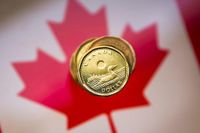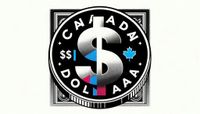On April 9, 2025, the Canadian dollar experienced a notable surge, climbing 1.2% against its U.S. counterpart, reaching 1.4095 per U.S. dollar, or 70.95 U.S. cents, marking its largest gain since January 20. This increase comes amid a backdrop of fluctuating oil prices and evolving trade relations, particularly following U.S. President Donald Trump's announcement regarding tariffs.
The Canadian dollar's resilience is particularly significant given the context of a global trade war that has been brewing between the U.S. and China. On the same day, oil prices, a crucial component of Canada’s export profile, settled 4.65% higher at $62.35 a barrel, reflecting a recovery in energy markets driven by improved demand outlooks.
Adam Button, chief currency analyst at ForexLive, commented on the situation, stating, "The global growth outlook looks better is the bottom line for the Canadian dollar right now. Extreme reciprocal tariffs were likely to create a worldwide recession and now it’s clear it was all a negotiating tactic." This perspective highlights the shifting sentiments among investors, who are increasingly turning to the Canadian dollar as a more stable option amidst rising global trade tensions.
The backdrop for this currency shift includes a significant policy change from the U.S. government. President Trump announced a temporary lowering of tariffs on many countries, although he simultaneously raised them on imports from China to 84%. This dual approach has created a complex dynamic in the financial markets, contributing to the U.S. dollar's weakening against major global currencies.
As a result of these developments, the Canadian bond market has also seen yields rise across the board. The 2-year bond yield increased by 13.8 basis points to 2.622%, reaching its highest intraday level since February 25 at 2.709%. This uptick in yields is indicative of a broader trend where investors are seeking refuge in Canadian assets as uncertainties loom over the global economy.
Canada, which is this year’s chair of the G7 developed economies, is taking proactive steps to ensure market stability. Japan's Ministry of Finance announced that Canada and Japan are cooperating to maintain stability in financial markets and the global financial system. This partnership underscores the importance of international cooperation in addressing the challenges posed by ongoing trade disputes.
Furthermore, Canada has implemented a 25% counter-tariff on non-USMCA compliant vehicles, effective April 9, 2025. This domestic safeguard aims to protect key export sectors and bolster trade expectations, further enhancing investor confidence in the Canadian economy.
The economic landscape is indeed shifting, with the Canadian dollar emerging as a symbol of resilience amid global uncertainties. As investors navigate these turbulent waters, the appeal of the loonie is growing, reflecting a strategic shift towards more stable currencies.
In summary, the Canadian dollar's recent performance illustrates the intricate interplay between domestic policies and international trade dynamics. As the global economy continues to face challenges, the strength of the Canadian dollar serves as a reminder of the importance of strategic financial management and the potential for recovery in commodity-linked currencies.







